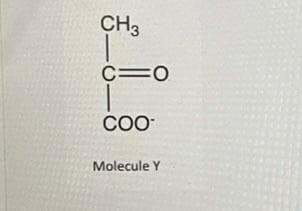Beginning with molecule Y shown above, determine the net ATP equivalents that would be required to add 3 glucose residues to a glycogen primer. Please show your calculations (clearly) also indicate how many molecules of Y would be required to extend the glycogen primer by three glucose residues, so that full credit may be given.


Glycogenolysis is the process of conversion of glycogen synthesis, in which glucose molecules are added to chains of glycogen for storage.
In given question, the starting molecule Y for glycogenolysis is pyruvate molecule which needs to be converted to Glucose by Gluconeogenesis to enter into Glycogenesis pathway.
So, the Pyruvate will be first converted to Glucose via Gluconeogenesis and then Glucose will be added to Glycogen via Glycogenesis.
A) Conversion of Pyruvate to Glucose in Gluconeogenesis:
Pyruvate is converted to Glucose in following manner:
.png)
In the above figure, it is clear that 1 pyruvate molecule requires 2 ATP and 1 GTP (equal to ATP) for conversion into 1 Glucose molecule. Therefore, 3 Pyruvate molecules will require 9 ATP (6ATP and 3GTP) to get converted into 3 glucose molecules.
(B) Adding glucose to Glycogen via Glycogenolysis: The glycogenolysis only consumes 1 ATP molecule in the first step which converts glucose to glucose -6-phosphate and then Glucose-6-phosphate is added to shorter glycogen chains in sequential steps that do not require ATP. So, 1 molecule of Glucose consumes 1 ATP in glycogenolysis and therefore, 3 Glucose will consume 3 ATP to get added on Glycogen chain via Glycogenolysis.
Step by step
Solved in 3 steps with 1 images









